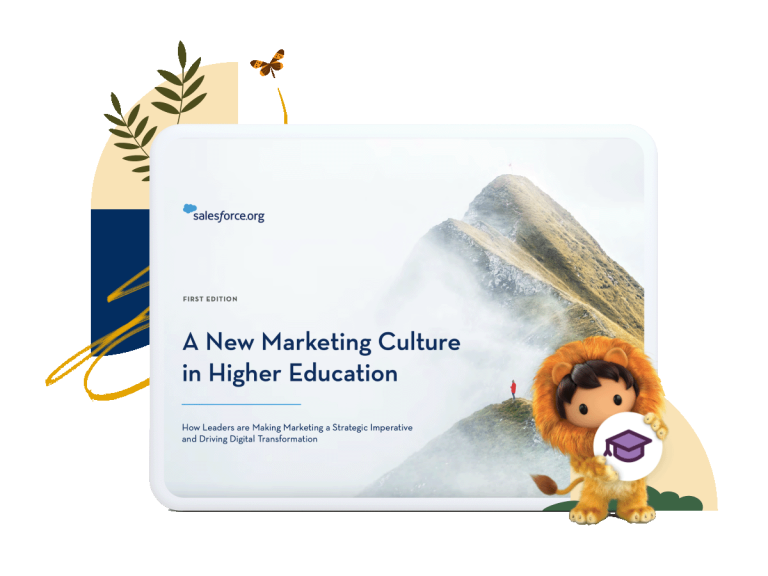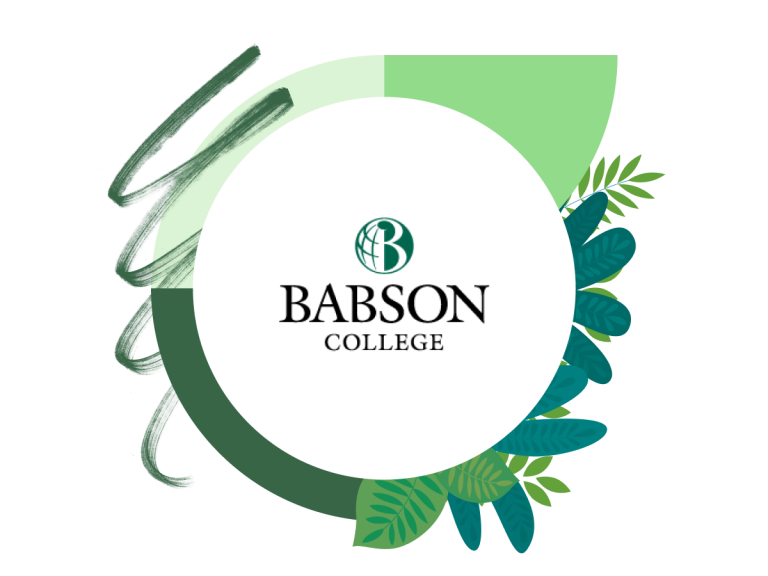What is Unified Higher Education Marketing?
Higher Education marketing and communications happens in a landscape where on average, 75% of marketing and communications staff on campus don’t report centrally, but through the respective college dean or department leader (recruiting, advancement, etc.). As a result, this can lead to many operational inefficiencies, brand confusion, and a disconnected experience for students, constituents, staff, and supporters.
While there are many different college or university marketing and communications strategies that can be deployed for different campus functions, one of the most important is to align and unify specific elements of marketing and communications centrally. Unfortunately, this can have many hurdles and requires a high degree of collaboration.
Some of those hurdles include:
- A lack of desire to change: The perception that the current state is fine as is can derail more unified operations.
- Siloed nature of schools and departments: A culture of decentralization makes coming together more difficult.
- Shadow technology: Marketing technology purchased and implemented without input or guidance from marketing or IT.
- Ignoring central marketing and communications: When the central department isn’t viewed as a strategic partner, departments rely on external agencies.
- Moving too quickly: Trying to get too many departments aligned at once can make the process much more difficult.

Make Marketing a Strategic Imperative
“What we’re building takes lot of patience, but if we can balance our mindset between what success looks like now and what it looks like later, we’ll reach our goals. We are focused on making strategic decisions, not just using that next shiny object.”
– Kerry Salerno, Babson College Chief Marketing Officer
The Benefits of Unified Marketing and Communications
There are many benefits to unified higher education marketing and communications that extend beyond a more connected experience for students, constituents, staff, and supporters.
These include important operational efficiencies that save time, increase knowledge and understanding, and share costs among departments. As budgets can fluctuate, marketers and communicators need to be able to show the tangible benefits of alignment.
- Shared Cost: Most universities have marketers and communicators using different technology. This creates cost redundancies that aren’t always visible.
- Shared Knowledge: When using many disparate technologies, opportunities to combine knowledge to drive innovation and understanding is limited.
- Shared Data: Without it, there is no way of knowing how universities are engaging with constituents in a way that truly makes sense for them at a personal level.
- Shared Messaging: This doesn’t mean the same message for all. Rather, the core message can be similar across groups but with a level of personalization.

Changing the Narrative
“Everything we do now is driven by data. We were able to change the narrative on how we approached recruiting and admissions communications as well as our internal processes and practices”
– Julian Olivas, Director of Communications and Marketing for the Division of Enrollment Management
5 Higher Education Marketing and Communications Strategies
There are five key strategies that should be adopted in order to achieve campus-wide operational efficiencies.
1. Use Consistent Messaging, Voice, and Tone
Establish a communications platform that is relevant for the entire university.
A core messaging platform is essential. While a central message, voice, and tone is significant, if it isn’t relevant for different departments and colleges across campus, it won’t be widely adopted. Understanding the overlap of audiences is essential to creating messaging that resonates.
- Media: Without clear media rules of engagement, this can lead to inconsistent messaging that creates confusion across press releases, social media, web pages, and even email communications.
- Brand: Most universities don’t have the staff or resources to support many different brands, otherwise known as a “house of brands” (think well-known schools or colleges that exist within the university). It’s important to embrace a “branded house” strategy where resources can be shared.

A Student-Centric Approach to Higher Ed Marketing
“One of the best ways you can influence people is the brand piece. If you do it right, if it’s rooted in truth, everyone buys into it, and everybody wants to be part of that telling of the story. That, to me, has been one of the most powerful tools for transforming a decentralized organization.”
– Kate Ledger, University of Pittsburgh
2. Segment Your Constituents
The holistic effort to better understand constituents so you can make engagement more relevant.
Audience segmentation has been a big topic for higher education marketers and communicators, especially since COVID-19. Unfortunately, limited access to complete data, specifically constituent metadata (descriptive information), makes segmentation and message personalization difficult. As a result, engagement is sometimes conducted using batch-and-blast email tactics.
The main considerations are where the data lives, is it readily accessible, can it be used within the preferred marketing and communications platform, and can the data be segmented before any communication is sent.
Metadata for Constituents:
- Full name
- Address
- Major
- Last event attended
- When they last donated
- Expected graduation date (or date graduated if alumni)
- Research they engage with
- Forms completed across the university
- Parent of a student?

Scaling Personalized Communications at ASU
“We want to establish a relationship with students and make sure we are communicating correctly at the right stage about their correct next steps. We need to work at scale and increase the volume of communications we’re sending, but also send highly segmented, personalized messages.”
– Laura Vreeland, Associate Director, Academic Enterprise Communications
3. Provide Support Services
Developing a campus community for guidance, training, and documentation.
It is important for higher education marketing and communications to be seen as a strategic partner and not an order-taker for the rest of campus. Unfortunately, achieving alignment doesn’t happen organically. It requires fully-developed support services that bring staff together from different departments.
Documenting and making best practices easily accessible online is a start, but it also must include initial and ongoing training so that departments can understand the brand message, voice, tone and how to utilize technology to deliver it to the right audience.
Institutions that have achieved alignment conduct monthly meetings with all their campus partners where they can share learnings and discuss ways to drive engagement. These meetings should also include campus partners who share ways that they’re using what is being provided.
Suggested Support Services Include:
- Brand Assets Library: Includes typography, color palette, graphic elements, email templates, social media guide, and web standards.
- Training: Includes initial onboarding and ongoing training. Need to balance courses for beginners and those most advanced to keep partners engaged.
- Campus Community: Regular meeting that enables the central department to share strategy and partners to share their perspectives.
- Governance Model: Establish what the rules of engagement that campus partners must follow. Ideally, central marketing and communications is the owner.
- Center of Excellence (COE): Necessary when managing a central technology platform. This is where campus partners will be able to ask questions and receive gudance.
- Innovation Workshops: Where partners can learn about new technology features/functionality technology and test how they will be used in the future.
- Best Practices Sharing: Regular sharing of what’s working, what’s not and opportunities for others to learn from your mistakes/successes.

The Importance of Planning and Patience
“What we’re building takes a lot of patience, but if we can balance our mindset between what success looks like now and what it looks like later, we’ll reach our goals. We are focused on making strategic decisions, not just using that next shiny object.”
– Kerry Salerno, CMO, Babson College
4. Have a Complete Martech Stack
Have a single, campus-wide digital marketing and communications platform.
A unified higher education marketing and communications department recognizes that driving engagement with the right audience needs to happen through a robust central martech strategy.
Universities deploy an incredible amount of marketing and communications across many digital channels, including email, SMS, the web, social media and advertising. While features and functionality for orchestrating campaigns across channels is good to have, the ability to action on the right constituent data to inform personalization is what is most important.
This is where a Customer Relationship Management (CRM) platform for higher education becomes essential to collect known constituent information, then use that information to segment audiences and conduct personalized, timely, and relevant engagement.
Data-Driven Marketing Maturity Assessment for Higher Ed
Understand your current marketing maturity, plan where you want to be, and learn how to get there with a data-driven approach.
5. Plan Big, Start Small
Strategize, iterate and build organically
Once you’ve defined your brand message platform, identified campus-wide technology, and built the proper support systems, you’ll need to get campus buy-in to put the strategy in motion.
However, most universities operate a decentralized model. Unless there’s a mandate from the President, bringing other departments along requires consensus building. If working with your central team is too burdensome or confusing, other departments might not see the value in alignment.
Big change can’t happen all at once, so start small. Identify initial partners that are open to innovating and can pilot, test, and fine-tune a unified approach. The initial learnings from early partnerships are important as they become the blueprint that the rest of campus can follow.
Steps To Get Started
- Identify one large, strategic partner on campus that is important to success – Have them be part of planning.
- Bring on one or two smaller departments that you have a rapport – These departments should already know the benefits of alignment and are willing to learn with you.
- Keep the rest of campus informed of these partnerships – Others on campus will be skeptical, but repetition is important and will keep you accountable to drive execution.

Grow, Serve, and Retain Relationships
“If your goal is to build a 360 view of students’ interactions and you can’t bring all the players to the field, it’s not a 360 view, and it’s not effective. It needs to be simple, and it needs to be understandable, or people are going to ignore it.”
– Terry Brown, Associate Director of Admissions for Marketing and Recruitment Communications
While unified higher education marketing and communications requires alignment across many different departments, it’s worth the effort. Institutions that follow these marketing strategies can achieve greater operational efficiency, a better understanding of the martech landscape campus-wide, and increased engagement from their constituents.
Behind every great strategy is a trusted partner. Learn more about how Salesforce for Education can support your higher education marketing and communications team.
Learn about Salesforce for Higher Education
Salesforce for Higher Education provides marketing software for education institutions to help marketers increase awareness and engage new constituents.
